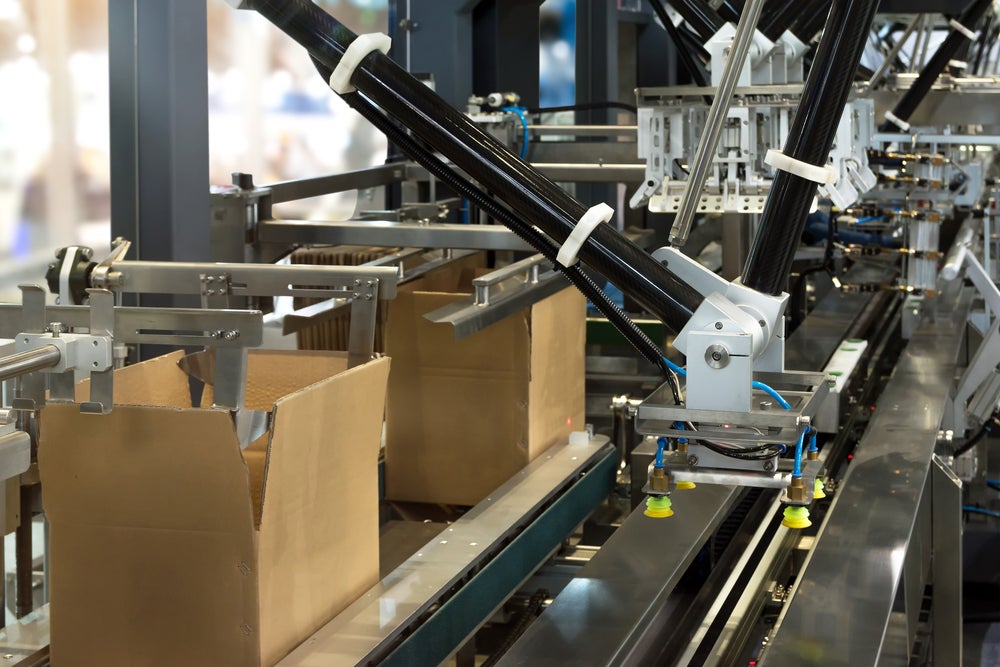
A report from industry experts, Smithers Pira, projects 3.5% annual growth, with sales in the global packaging market set to hit $997 billion by 2020. One development fuelling this growth is Industry 4.0 – often referred to as a key element of the ‘fourth industrial revolution.’ New technologies, driven by automation, data exchange, the internet of things, cloud computing, and more, are transforming manufacturing and distribution processes, and creating what are known as ‘smart factories.’
Technology is helping to improve the efficiency of the manufacturing process by enabling machines to connect and communicate without human input. Of course, the question is: can these technologies also automate sales, marketing, customer service and other strategically important functions? And, how important is human leadership within the business of manufacturing?
There is no straightforward answer. Yes, automation is impacting strategic business functions – but no, it isn’t replacing the humans responsible for driving sales, marketing and customer service. In fact, it’s helping these professionals perform their key activities more effectively. Technologies like customer relationship management (CRM), enterprise resource planning (ERP) and business intelligence (BI) are enabling them to enhance their customer communications and engage with new business opportunities far more successfully.
Enhanced day-to-day productivity is crucial to maximising the opportunities that exist within the highly lucrative packaging industry and staying ahead of the competition. The following key technology trends are influencing the entire supply chain and are key to success.
Data analysis: and customer insights and building rapport
Maintaining a good rapport with your customers is key to building a strong business. A sales-i study revealed that 40% of salespeople use their relationships with existing accounts as a base to guide their decisions with new customers. What’s more, a not insignificant 6% rely on their gut instinct alone to drive decision-making.
While this may serve some sales professionals in certain situations well, the decision-making process does need to include other elements. Consider the strength of a strategy that combines customer knowledge, instinct and data analysis. Such an approach to sales can yield superior results, and help forge even stronger business relationships. Data analytics tools can keep track of customer buying patterns and any up- or cross-sell opportunities. This supports greater visibility into market trends and allows salespeople to personalise their efforts for enhanced results.
How well do you really know your competitors?
Access the most comprehensive Company Profiles on the market, powered by GlobalData. Save hours of research. Gain competitive edge.

Thank you!
Your download email will arrive shortly
Not ready to buy yet? Download a free sample
We are confident about the unique quality of our Company Profiles. However, we want you to make the most beneficial decision for your business, so we offer a free sample that you can download by submitting the below form
By GlobalDataWith valuable insights guiding a sales strategy, packaging companies will be able to predict when a customer is likely to order more goods – and they can offer them a discount before the competition gets a chance to muscle in. They’ll also be notified if there’s a sudden dip in spending. That way, they can call the customer in good time and resolve any issues that may have occurred. The right data eliminates the need for guesswork or cold-calls. No time is wasted on trying to fill in the gaps; sales teams know what their customers need and when they need it.
As data visualisation becomes more sophisticated, it’s easier to share and understand these insights. In today’s world, sales and marketing teams don’t need a data scientist on hand to analyse and explain the raw data; instead, user-friendly images and graphs will help them process and interpret the information with simple clarity.
Transforming the workplace: tasks bots and automation
Repetitive, administrative tasks are a common headache for all businesses. However, some suffer more than others and lose valuable time completing tasks that could easily be automated. For example, our study showed that 17% of employees battle with manual data entry, 9.5% use outdated spreadsheets for reporting and analysis and 6% feel inadequately prepared for sales meetings.
Allocating time and employees to manage these tasks is an inefficient use of resources. It’s far better to focus sales, marketing, and other customer-facing teams on business-critical work. It’s their primary mission to drive profits, so they must be able to prioritise work such as building customer relationships, promoting your company’s brand, reassessing pricing structures, and closing deals to hit targets.
In the modern business environment, many software applications already use task bots to automate data entry, reporting, and the collation of information for meetings. In the coming years, automation will transform the workplace even further and free employees from the burden of administration.
Present technologies: mobile and cloud computing
As futuristic as they may seem, mobile and cloud technologies are already very present. They are changing, and improving, how businesses engage with their CRM, ERP and BI software applications. The companies that realise this now, and can reap the rewards before their rivals, will hold a strong position in the market.
Software-as-a-service (SaaS) solutions, for example, offer a more cost-effective alternative to Software-as-a-product (SaaP) solutions. With SaaP, companies must invest in on-site hardware to run software, manage the installation, and ongoing maintenance fees. SaaS provides all the resources and functionality that they need through an off-site, secure data centre.
Top cloud computing platforms also experience minimal (<1%) downtime each year. In addition to this reliability, cloud-based SaaS structures can offer smaller businesses with limited budgets a far more flexible and scalable pricing model. As a business grows, or the technology improves, the solution can be adjusted accordingly.
Our research proves that mobile accessibility can help your team perform better. From the survey, 11% of professionals said that they struggle to access the information they need when they’re out of the office, and 34% can’t access timely information to assist them in a sale.
The right mobile app will give your team access to all historic customer interactions quickly. They can check, update and share real-time information on the go, plus they’ll have all the valuable insights they need at their fingertips. Mobility means that any issues or opportunities are seen to immediately, keeping sales teams one step ahead of their customers’ shifting needs and two steps ahead of the competition.
An agile and alert company will achieve higher productivity levels and better revenues. To remain truly competitive, packaging companies must use new technologies to their advantage – beyond the manufacturing process alone.







